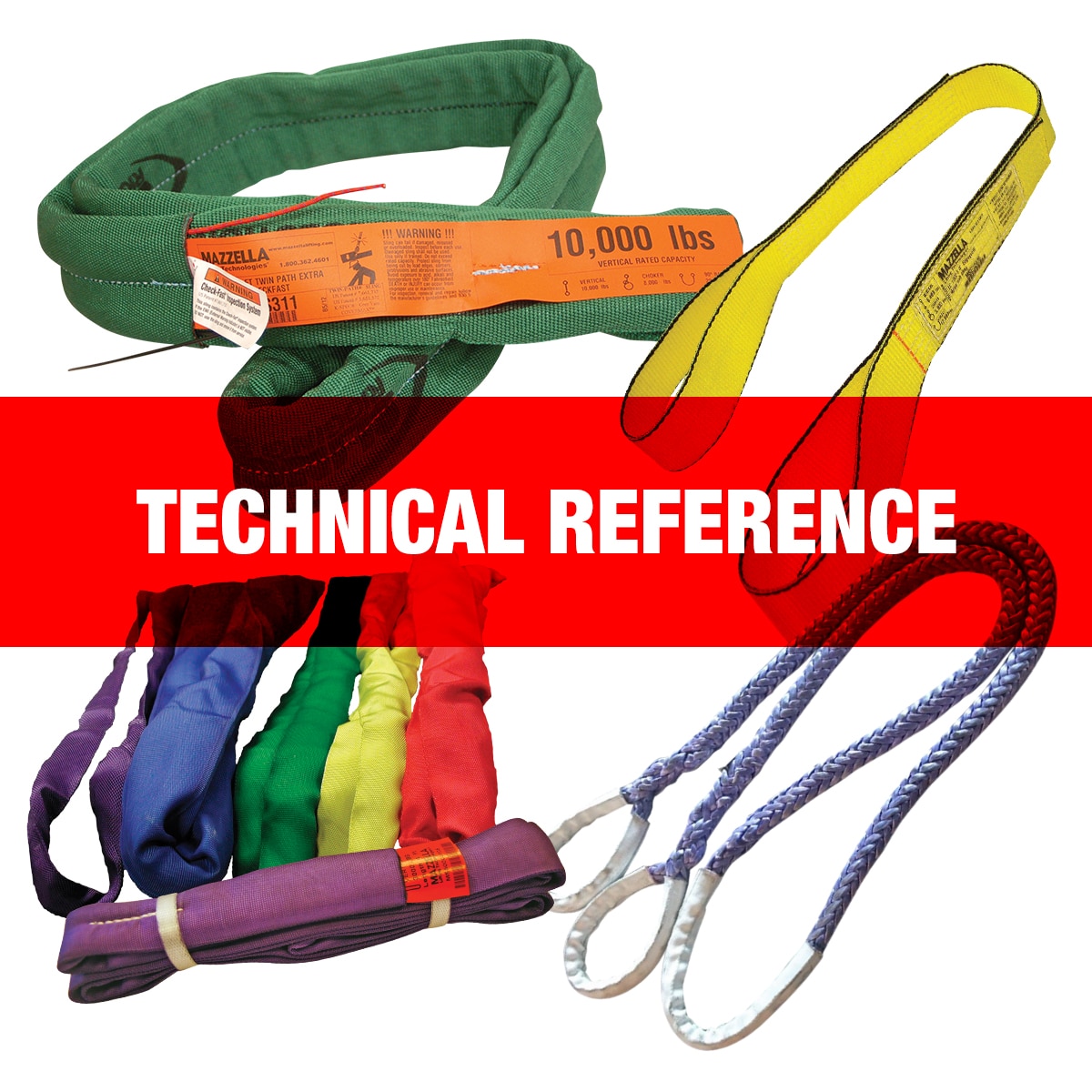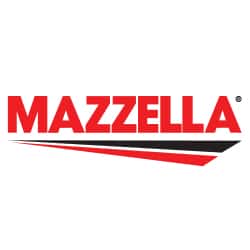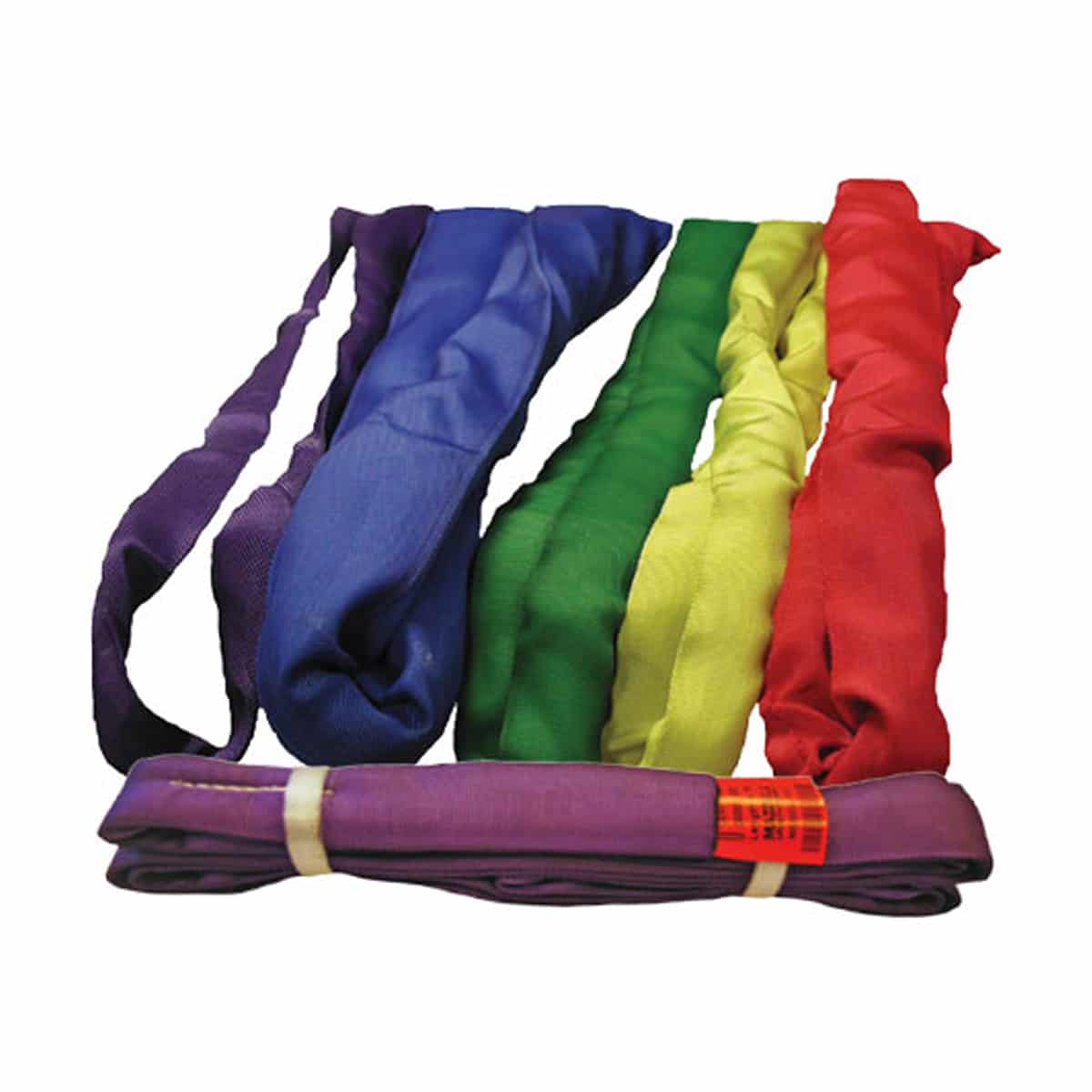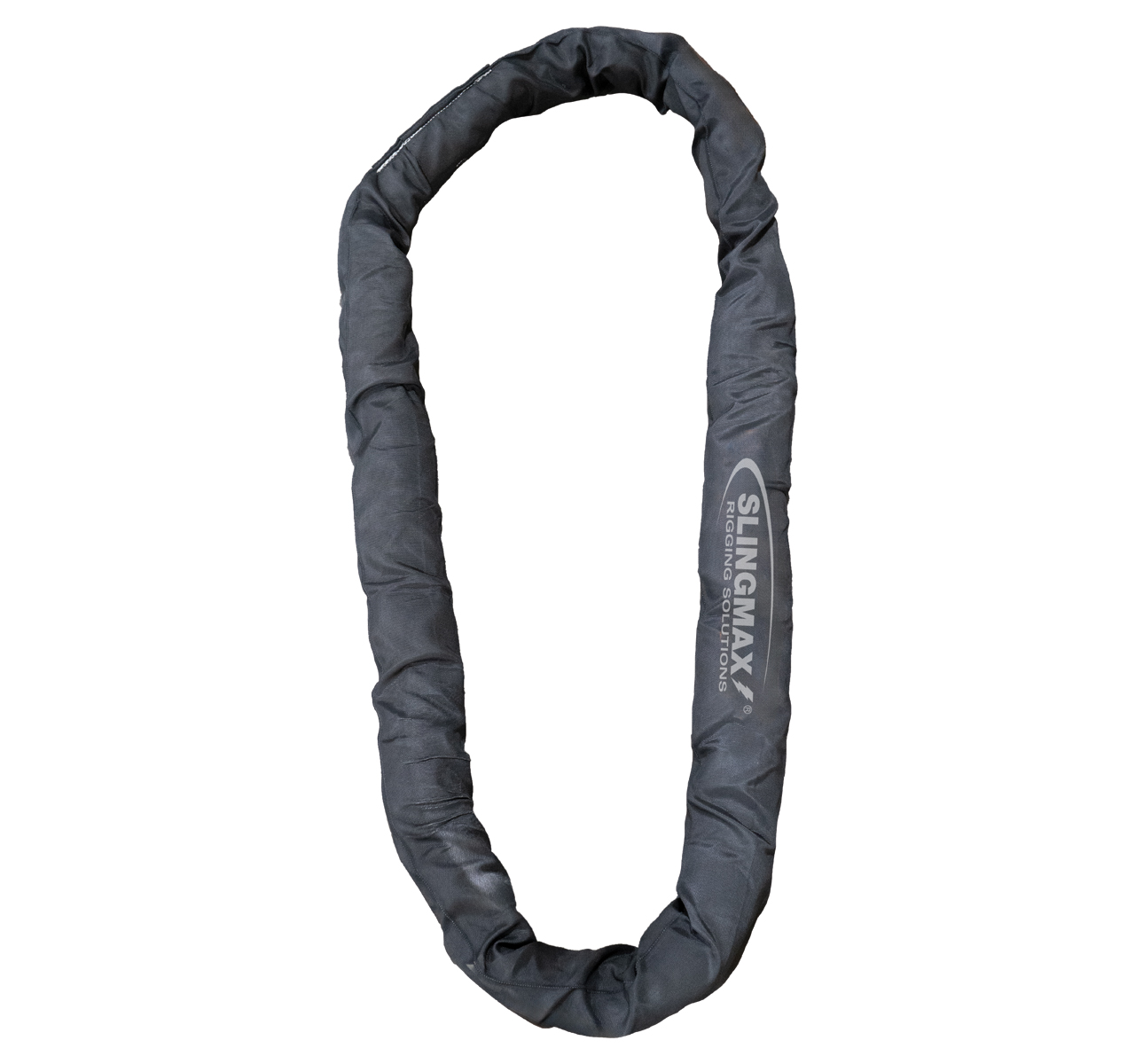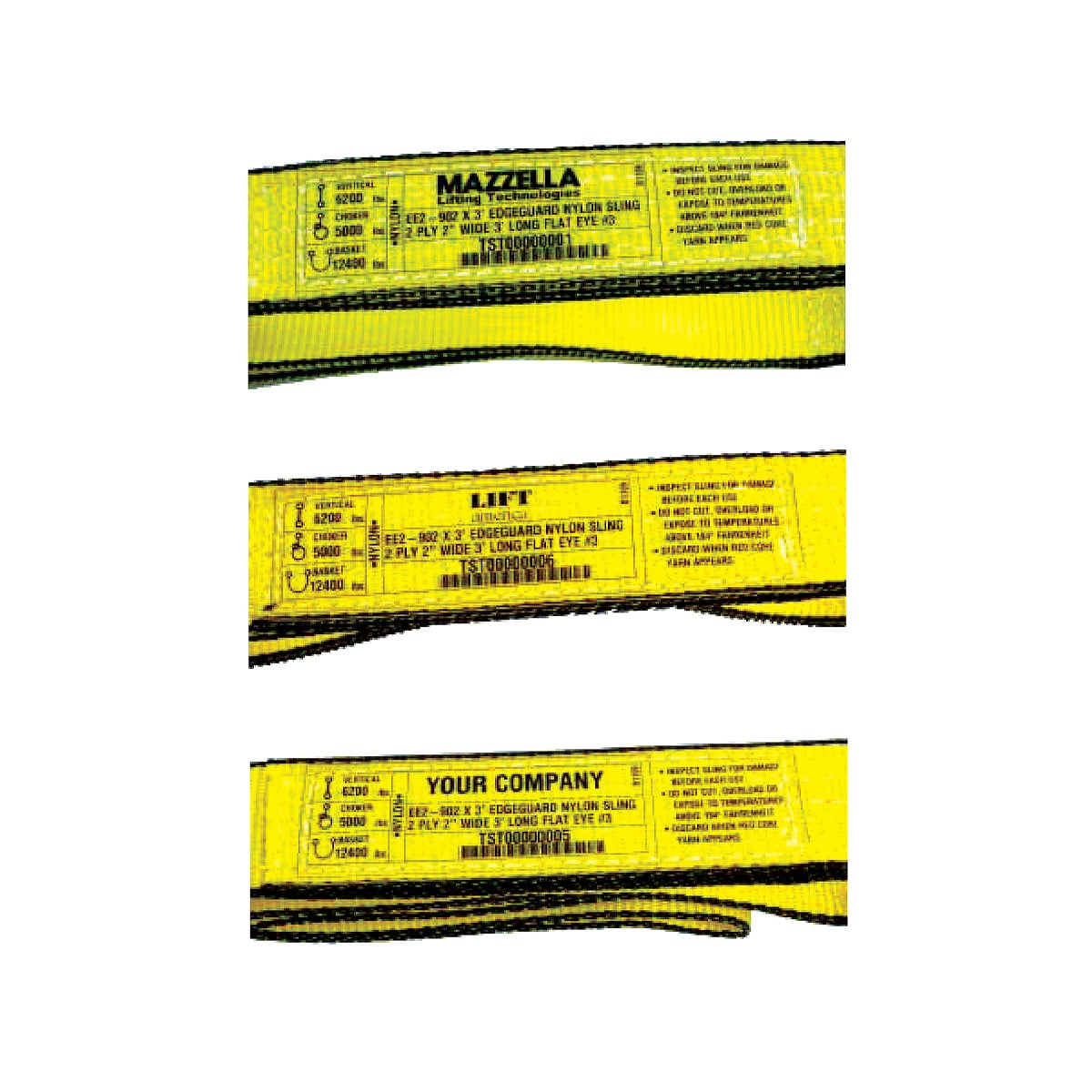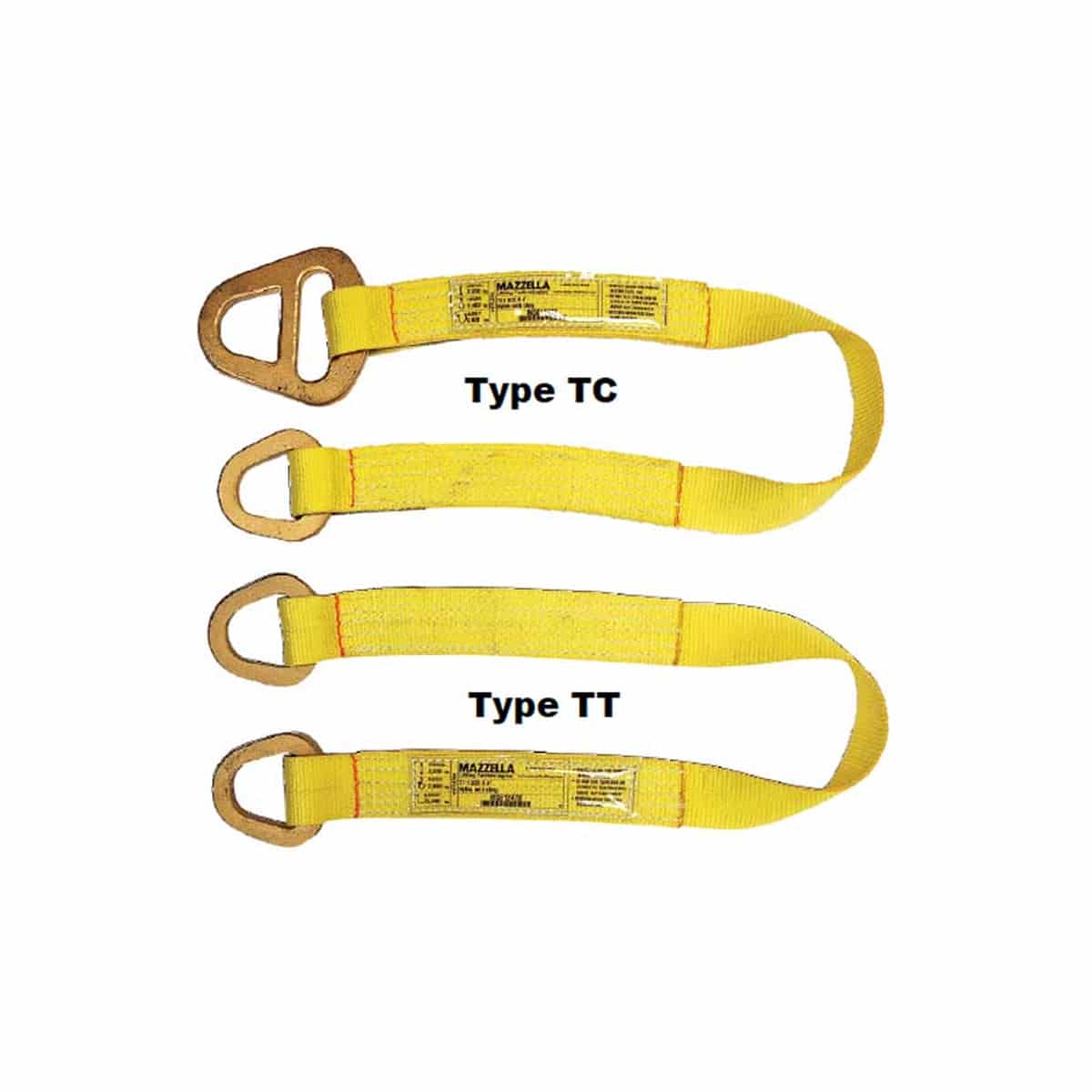Description
Operating Practices
Wherever any sling is used, the following practices shall be observed:
- Slings that are damaged or defective shall not be used.
- Slings shall not be shortened with knots, bolts or other makeshift devices.
- Sling legs shall not be kinked.
- Slings shall not be loaded in excess of their rated capacities.
- Slings used in a basket hitch shall have the loads balanced to prevent slippage.
- Slings shall be securely attached to their loads.
- Slings shall be padded or protected from the edges of their loads.
- Suspended loads shall be kept clear of all obstruction.
- All employees shall be kept clear of loads about to be lifted, and of suspended loads.
- Hands and fingers shall not be placed between the sling and its load while the sling is being tightened around the load.
- Shock loading is prohibited.
- A sling shall not be pulled from under a load when the sling is resting on the load.
Inspections
Each day before using the sling, all fastenings and attachments shall be inspected for damage or defects by a competent person designated by the employer.
Additional inspections shall be performed during sling use where severe conditions warrant. Damaged or defective slings shall be immediately removed from service.
Additional Requirements and Operating Practices for:
- Single-Path
- Twin-Path®
- Tuff-Path®
- Sparkeater®
- Twin-Path® Extra
- Tuff-Path® Extra
- Each sling must be marked or coded to show the rated capacities of the sling.
- Slings shall not be used with loads in excess of the rated capacity.
- All hooks, shackles and other fittings must be free of all edges that could damage the slings.
- Chemically active environments, such as acids and caustics, can effect the strength of roundslings. The roundsling manufacturer should be consulted before roundslings are used in chemically active environments.
- Edges in contact with the sling should be padded. The use of wear pads is recommended.
- Polyester roundslings shall not be used at temperatures in excess of 180°F (82°C) or at temperatures below -40°F (-40°C). Refer to sling tag for specific fiber and temperature information. Sparkeater® should not exceed 300°F.
- Inspection: Slings must be immediately removed from service if any of the following conditions are present:
A. For slings with tell-tail indicators, if the tell-tails shrink to where 1/2″ or less is exposed.
B. For slings with Check-Fast™ Inspection System, if the EWI is not visible.
C. Cuts to sling cover exposing inner yarns.
D. Holes, tears, cuts, snags or abrasion which expose the inner yarns.
E. Excessive pitting or corrosion, cracked, distorted or broken fittings.
F. Melting or charring of any part of the sling.
G. Acid or caustic burns.
H. Other visible damage which causes doubt as to the strength of the sling.
I. Missing or illegible roundsling identification.
J. Broken or worn stitching in the cover which exposes the core yarns.
K. Roundslings that are knotted.

